Author: d.korzynski
We are delighted to share that Masterpress has maintained its EcoVadis silver medal in May 2025, a recognition of our steadfast commitment to sustainability and responsible business practices. Even more exciting, we’ve achieved a placement in the 92nd percentile, positioning us among the top 8% of companies rated by EcoVadis.
EcoVadis, a globally trusted provider of business sustainability ratings, evaluates companies based on their environmental, social, and governance (ESG) performance. This continued recognition reflects our dedication to:
– Reducing our environmental footprint
– Upholding ethical labor and business practices
– Prioritizing sustainable procurement
We’re incredibly proud of this milestone and extend our deepest gratitude to our employees, partners, and stakeholders. Your support and collaboration have been instrumental in driving our success.
Looking ahead, Masterpress remains committed to pushing the boundaries of sustainability and creating a positive impact on the world. Together, we’ll continue to innovate and lead with purpose.Thank you for being part of our journey!

Join us at booth E2.23 during the Warsaw Pack trade fair, taking place from April 8th to April 10th, 2025, in Nadarzyn near Warsaw. This is your chance to explore our advanced shrink sleeve application machines and discover our extensive range of shrink sleeve and pressure-sensitive labels.
Warsaw Pack is more than just a trade fair—it’s an opportunity to connect, exchange ideas, and stay ahead of industry trends. Visit our booth to discuss the latest developments in labeling and packaging technology and see how our expertise can benefit your business.
Don’t miss the chance to meet us and explore the future of packaging. See you at Warsaw Pack!

Please note that Masterpress will be closed from December 24th to December 29th, 2024, as well as on January 1st and January 6th, 2025.
All messages received during this time will be addressed once we return to work.
We wish you a joyful holiday season and a Happy New Year!
We recently took part in the AWA (Alexander Watson Associates) International Sleeve Label Conference & Exhibition 2024 in Miami, where our team had the chance to contribute to important industry discussions.
Our General Manager, Jeroen de Haan, joined a panel on “The Future of Sustainability and Packaging,” where he shared our experiences alongside other industry professionals, exploring the challenges and in sustainable label opportunities in packaging.
R. Gabriel Magdaleno, our Strategic Product Management & Marketing Director, presented “Mastering Sleeve Label Excellence: Sustainable Innovations.” He discussed our award-winning custom label solution for TINE SA, focusing on how innovation and sustainability came together in our shrink sleeve solutions within the labelling industry.
As in previous years, Masterpress’s participation at this event underscores our ongoing commitment to developing products and designed for recycling solutions that align with evolving industry trends. Engaging in these discussions allows us to continuously refine our approach and contribute to the future of packaging.
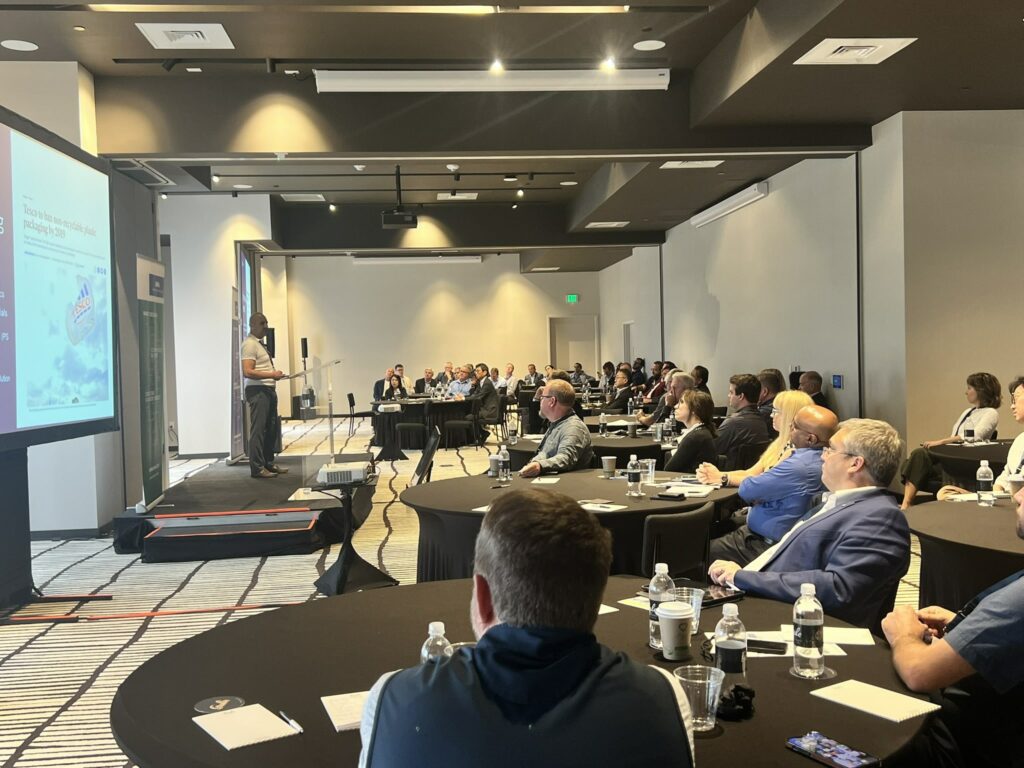
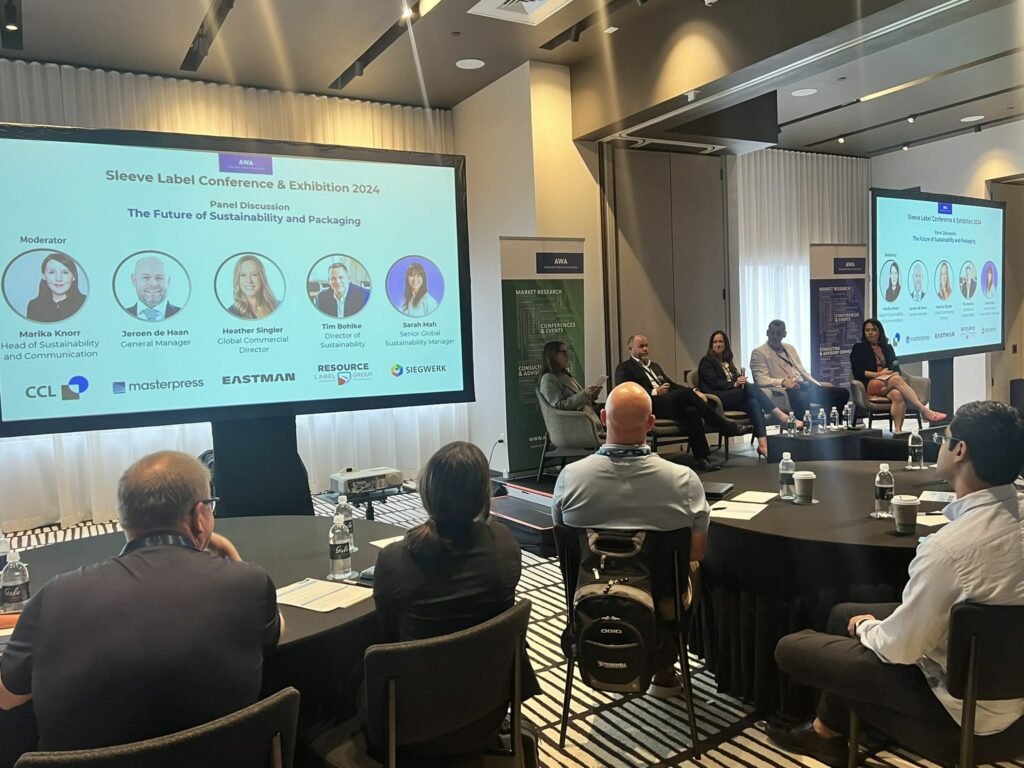
We invite you to visit Masterpress at All4Pack 2024, taking place from November 4 to 7, 2024, in Paris. We will be showcasing our latest innovations in sustainable packaging solutions for the FMCG sector at Booth 5C152.
Explore our shrink sleeve and pressure sensitive labels and, designed to enhance brand visibility and quality. Engage with our team to learn more about our state-of-the-art label application machines and how they can elevate your packaging strategy.
This year, we will also unveil our two award-winning sleeve labels, recognized internationally for their sustainable impact and excellence in design. Additionally, don’t miss the opportunity to see our innovative monolayer pouch—an eco-friendly packaging solution that delivers outstanding performance while supporting your sustainability goals.
Find us at Hall 5, Stand 5C152, and let’s work together to redefine the packaging landscape.

Join Masterpress at FACHPACK 2024 from September 24 to 26 in Nuremberg, where we’ll showcase our latest sustainable packaging solutions for the FMCG industry. Explore our Pressure Sensitive Labels and shrink sleeve labels, designed for premium branding, and discuss our label application machines as well as sustainable solutions for the e-commerce sector.
We’re also excited to present our two award-winning sleeve labels that have earned international recognition for sustainable contribution and best in class. Our innovative monolayer pouch—a cutting-edge, eco-friendly packaging option that delivers outstanding performance while supporting your sustainability goals will also be unveiled at this year’s event.
Find us in Hall 5, Stand 5-161 to discover how our packaging can help your brand stand out and succeed in the competitive FMCG market.
Don’t miss out—let’s shape the future of packaging together!
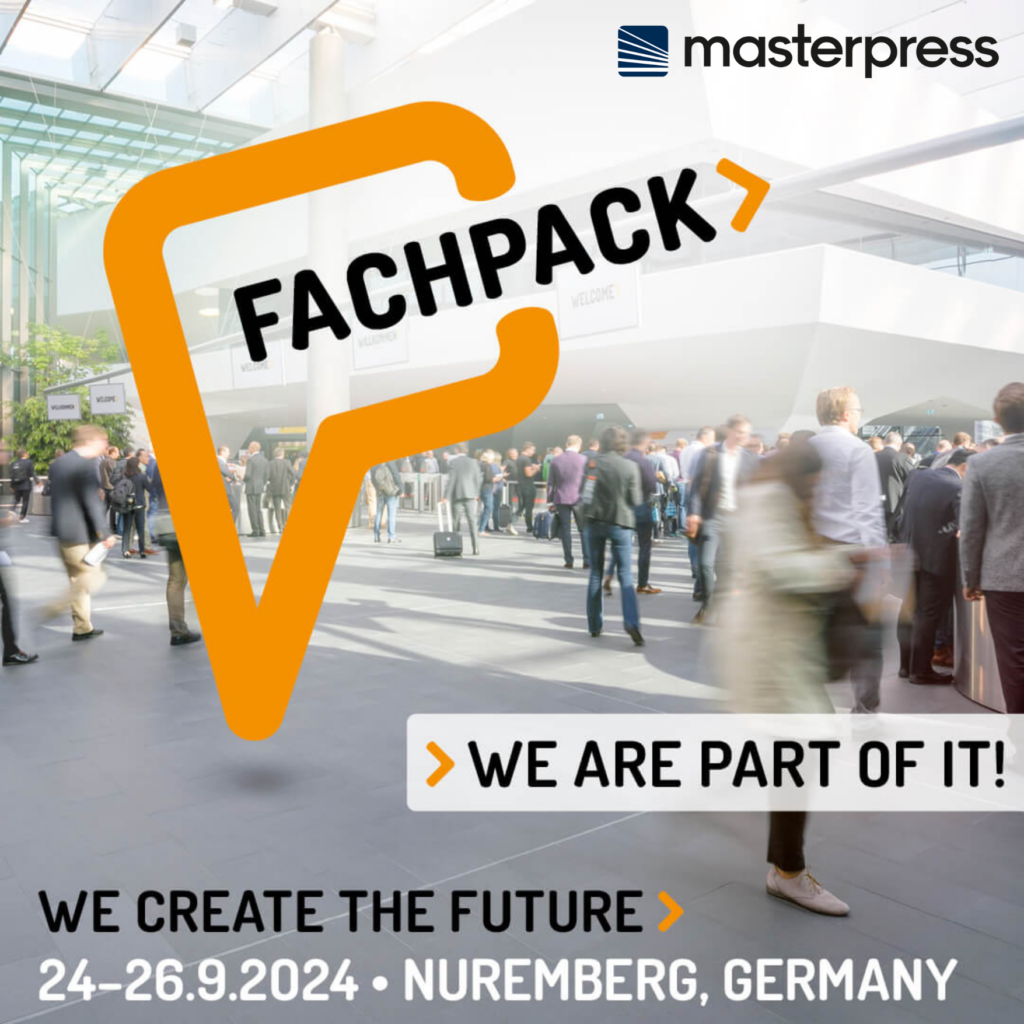
A hybrid approach to label printing encourages innovation and flexibility in the client-customer relationship, delivering unique, elegant and durable labels for Distilia’s high-end, collectible bottles.
Masterpress has recently completed a niche labelling project for Distilia, an independent bottler of high-quality spirits specialising in selling unique bottles of rare, collectible alcohols. The project involved the production of five series of 250 exclusive labels using hybrid printing – Masterpress’s technique that combined digital printing, screen printing, lamination and varnishing – to achieve a distinctive, touch-sensitive, durable and visually striking effect.
Distilia, known for sourcing unique barrels and bottling exclusive batches, required labels that would not only mirror the luxury and exclusivity of their products but also captivate investors and enthusiasts at auctions. Unlike standard retail labels, these had to demonstrate superior quality and durability – essential characteristics for supreme and collectible items.
The company approached Masterpress with a pre-designed label featuring Yu Chaun’s real-life painting, aiming to integrate metallic elements and extenuate the painting’s intricate details. Considering the unique nature of the request, the challenge for Masterpress was to find the right technology to turn this vision into a captivating and exclusive label. “Our goal was to create something truly special – a label that reflects the heritage and sophistication of Distilia’s products while pushing the boundaries of conventional label printing and design,” said Artur Lesiński, business development manager at Masterpress.
“We wanted labels inspired by painted artwork that would capture the essence of our collectible spirits, showcasing their exclusivity and enduring quality,” said Jakub Bagiński, managing director of Distilia. “We had a clear vision and a ready design, but needed a partner that could turn this into reality. Masterpress achieved this with a blend of artistry and advanced printing techniques, which managed to capture even the paint brushes of the original painting and enhance the allure and premium nature of our products.”
“The project was something new for us, considering the label’s niche purpose and the fact we had to reproduce real art with all its details. At the same time, Distilia’s flexibility on how we should implement the label offered us an opportunity to see where we stand when it comes to our creative and technological capabilities,” said Aleksander Gajecki, digital printing manager at Masterpress.
Masterpress combined multiple technologies – digital printing, screen printing, lamination and varnishing. This combination of digital printing with different finishing techniques enabled the company to achieve a distinctive, touch-sensitive, and visually striking label. The label was printed on silver paper with a soft touch and laminate finish, creating a combination of paper and foil to make the connection soft and noble.

Thanks to digital printing’s flexibility and capabilities, Masterpress was able to test various solutions and complete the adjustments quicker, while reducing costs – efficiently consulting new versions with Distilia. Additionally, the use of digital printing contributed to reduced water, energy and paint consumption, coupled with less waste throughout the manufacturing process.
“Masterpress’s printing capabilities [digital printing] allowed for unprecedented levels of detail and colour fidelity. Each label meticulously incorporates special lacquers and metallic finishes, achieving a noble shade of gold, creating a really unique, tactile experience,” Distilia’s managing director Jakub Baginski highlighted.
“Trickling down” innovation for unique solutions and results
“Perhaps the best way to describe our experience working with Distilia on this project is ‘trickle down innovation’ – the technological freedom from the client gave us space for innovative hybrid solutions, and at the same time, room to provide flexibility across the whole manufacturer-client relationship,” said Artur Lesiński at Masterpress. “For example, we were able to deliver a high level of overprint, giving Distilia’s graphic designers more room to test new designs – and, thus, ‘trickling down’ innovation across our cooperation chain.”
Masterpress has comprehensively met Distilia’s expectations – from unique endurance and elegance to intricate aspects linked to the product’s advertisement, the company’s Managing Director reaffirmed. “Masterpress’s hybrid approach ensured that our designers had no limitations in the label design process,” Mr. Baginski added. “We wanted to reproduce the original images as best as possible. At the same time, the final visual effects were also key for us. We needed a label that looks as good – and even better – on pictures as it does on the shelf. Masterpress provided us with that exact product concept.”
“We always strive to meet our client’s expectations, in which the high-quality of the label plays a crucial role,” Mr. Baginski emphasised. “We were thus looking for a partner that could deliver a label that showcases the marriage of art, exclusive collection and consumption. Distilia is pleased to have found that in Masterpress with their innovative hybrid approach.”
Following the success of this project, Masterpress and Distilia have extended their collaboration, and are now working on a new label product.
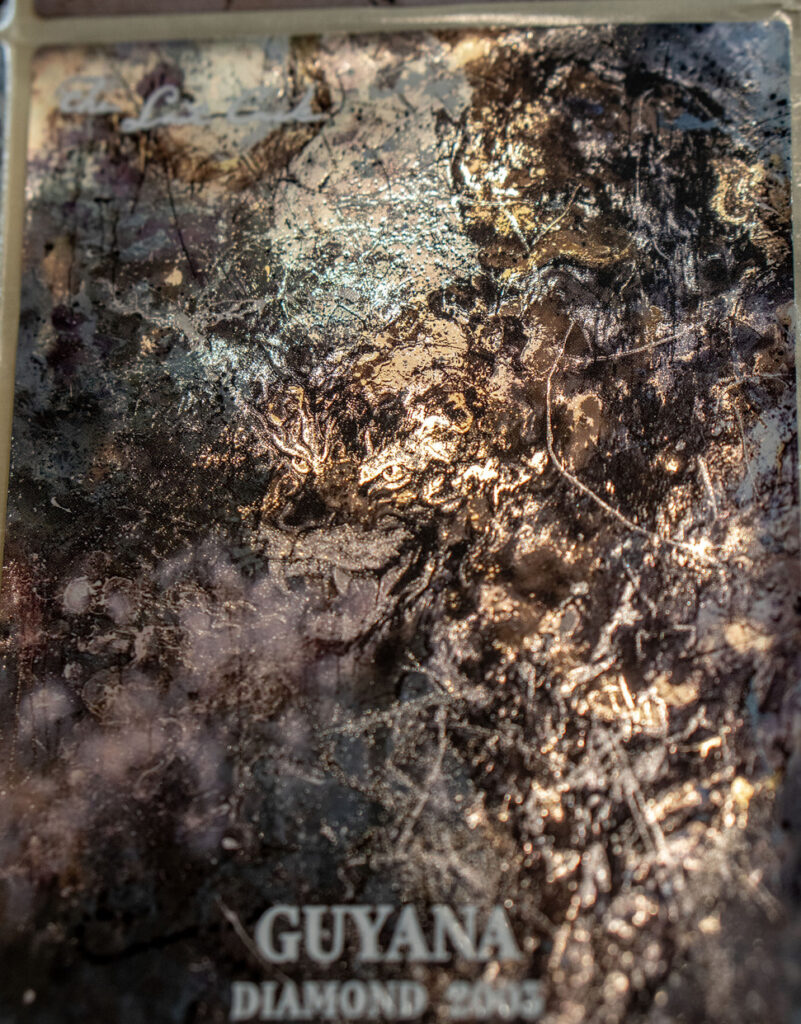
About Distilia
Founded in 2018 by Jakub Bagiński and Piotr Kossowski, who together bring over ten years of experience in the premium spirits industry, Distilia has quickly made a significant impact. The company has become a notable brand among independent bottlers, providing official, bespoke, and white-label editions of whisky, rum, cognac, and armagnac. The company’s high-quality spirits have received numerous awards and developed a loyal customer base. By combining art and fine spirits, Distilia has launched impressive series such as The Sins Series, The Last Cask Series, and Karuizawa Five Decades. These products captivate both connoisseurs and collectors with their artistic presentation, including finely crafted wooden boxes, decorated bottles, elegant labels, and wax details. Distilia stands for uncompromising quality and unique products. For more details, visit www.distilia.com.
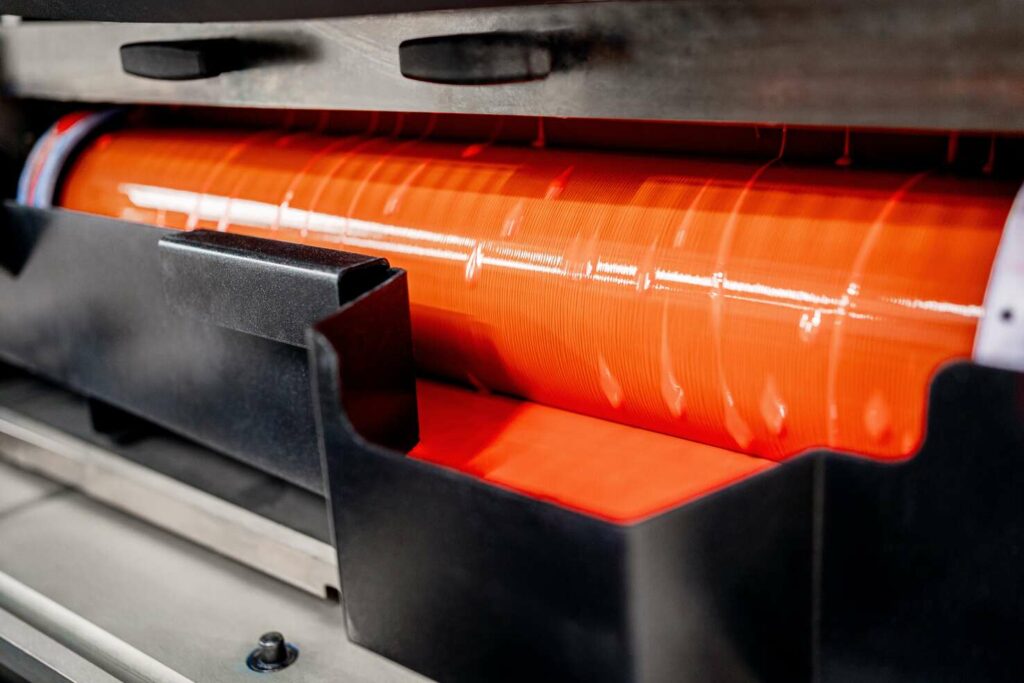
Siegwerk, one of the leading global providers of printing inks and coatings for packaging applications and labels, has announced the launch of its first full UV flexo deinking system for the European market: CIRKIT CLEARPRIME UV E02.
The new primer technology for non-food packaging applications offers a validated solution for safe and economic deinking of UV-printed self-adhesive labels (PSL). As a result, it improves the recyclability of labeled plastic packaging and enables the recovery of high-quality recyclates that are suitable for reuse in non-food packaging applications.
Although UV inks offer some advantageous properties for printing labels, they also pose a challenge for the subsequent recycling. “Depending on the substrate, UV inks are often very difficult to remove and can therefore lead to contaminations of recyclates, which significantly limits their further reuse,” explains Marc Larvor, Head of Technology Narrow EMEA at Siegwerk. “As a result, it is not surprising that UV-printed packaging has so far been considered as problematic in terms of a Circular Economy.” With CIRKIT CLEARPRIME UV E02, Siegwerk now offers a primer solution that specifically addresses this challenge. By enabling easy and safe deinking of UV-printed self-adhesive labels, it eliminates the need for prior label removal if the used plastics are compatible. “Such combined mechanical recycling of labels and plastic packaging can not only help to increase recycling rates, but also to save time and costs,” adds Marc Larvor. “Thereby, our new UV flexo deinking primer actively contributes to realize high-quality recyclates for circular waste streams.”
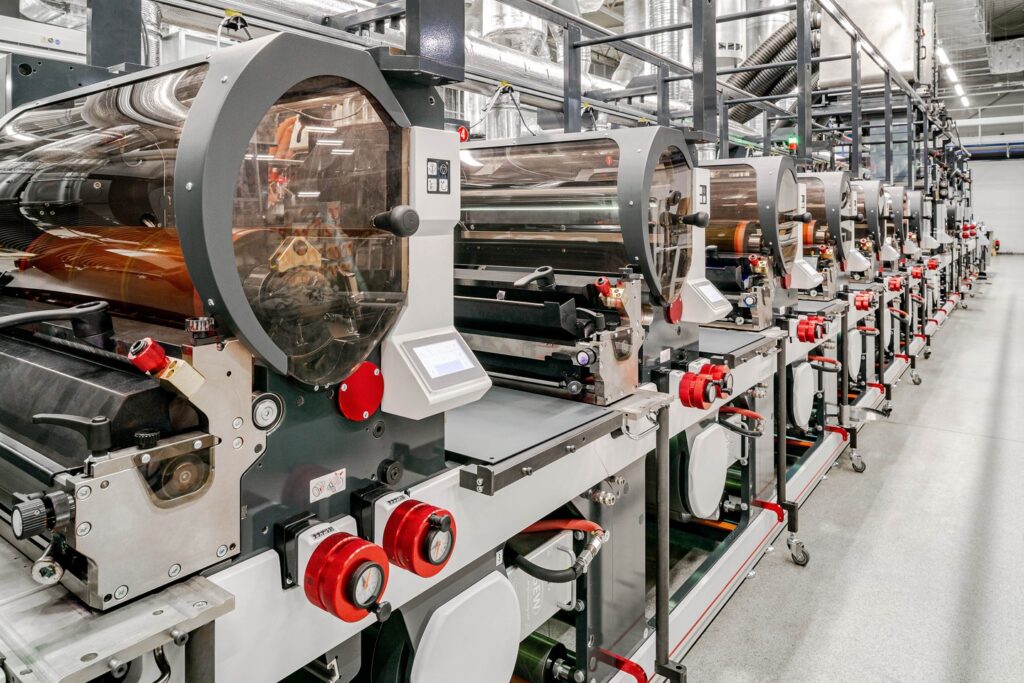
In a first field test with Masterpress Siegwerk’s new deinking primer has proven its effectiveness in all aspects. Masterpress’ research and development (R&D) experts used uncoated transparent or white pressure sensitive labels (PSL) made of PE85 and applied Siegwerk’s CIRKIT CLEARPRIME UV E02 followed by bleeding resistant UV flexo inks and an UV flexo OPV. First, the primer created a perfect adhesion between substrate and inks and later enabled full ink and varnish removal of the printed polyethylene (PE) film at standard deinking conditions based on the QT 507 washing protocol of the European PET Bottle Platform (EPBP). The primer layer also dissolved residue-free in the hot washing process and thus proved its ability to generate high-quality transparent or white recyclates, while the used non-bleeding ink formulations ensured a clean and reusable washing solution.
In-house laboratory tests at Masterpress and Siegwerk have shown great recyclate results underlining the effectiveness of the new deinking primer. “Consistently investing in its R&D laboratory, Masterpress brings state-of-the-art capabilities to test and trial new inks or materials before they enter the market. We are dedicated to advancing innovation within the shrink sleeve and self-adhesive label industry and are well positioned to help accelerate the commercialization of new, sustainable, recyclable products and materials on the market,” said Katarzyna Wasilewska, research and development manager at Masterpress. “Our tests confirmed an impressive recyclability of the UV-printed PE labels. Compared to other labels with no deinking technology, we could observe that contaminations of plastic recyclates due to discoloration could be massively reduced by using Siegwerk’s UV Deinking Primer.”
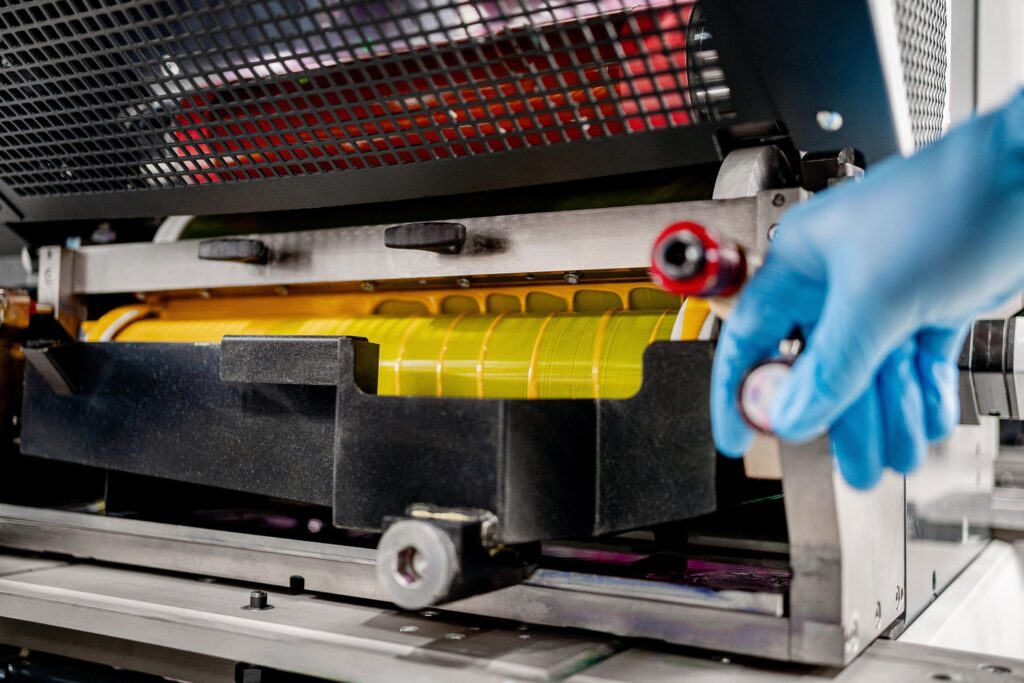
Therewith, CIRKIT CLEARPRIME UV E02 makes a significant contribution to improving the quality of recyclates and increasing their reusability. It works perfectly with the company’s established Sicura flexo series such as the non-low migration Sicura Flex 39-8 or the dual-curing series Sicura Flex Dual Cure. In addition, the new primer is compliant with different film materials and allows an inline printing of deinkable materials in a 100% UV-Flexo press setup keeping the complexity for users as low as possible. “With only three minutes, the new UV flexo primer even offers a deinking speed as fast as a water-based deinking primer making it to a great alternative for converters who are using a pure UV flexo press and are not able to process a water-based primer,” adds Katarzyna Wasilewska.
With CIRKIT CLEARPRIME UV E02, Siegwerk has not only added another functional coating solution to its CIRKIT product portfolio for packaging designs in the sense of a Circular Economy, but is also continuing to drive deinking as a new industry standard to further improve the recyclability of plastic packaging. Currently, the company’s portfolio of circular coatings already covers several water-based and solvent-based technologies for different applications, substrates, coating processes and performances: From barrier coatings against liquids, oil and grease, water vapor, oxygen, and UV light through heat seal and protection coatings to delamination and deinking primers.
To learn more about Siegwerk’s coating offering, please visit https://www.siegwerk.com/en/inks-coatings/coatings.html
Recent EcoVadis improvement to Silver aligns with company’s commitment to 42% Scope 1 & 2 GHG reduction target by 2030 as approved by SBTi
We signed the commitment letter to join the Science Based Targets initiative (SBTi). With a resolute focus on ethical and sustainable growth, the company aims to significantly curtail greenhouse gas (GHG) emissions, aligning with efforts to limit global temperature rise to 1.5°C above pre-industrial levels.
“By committing to set a roadmap for science-based emissions reduction targets within the SBTi, Masterpress is joining thousands of companies worldwide that believe we are all responsible and able to make a positive contribution to the health of our planet”, said Jeroen de Haan, general manager of Masterpress. “We aim to reduce our Scope 1 and 2 GHG emissions by 42% by 2030 from a base year of 2022 by improving the footprint of our own operations and by reducing the environmental footprint of our decorative packaging products for our end customers.”

Over the next couple of years, Masterpress will be working closely with the SBTi to validate its GHG emissions reduction roadmap for Scope 1 and 2 emissions aligned with the Paris Agreement which sets the goal of limiting global warming to 1.5°C. In addition, Masterpress will also work with SBTi to develop its Scope 3 GHG emissions target during this period.
“Importantly, this is not the beginning of a journey for Masterpress, where we have for many years been innovating with new, sustainable, recyclable products and materials on the market”, continued Jeroen de Haan. “But you cannot improve what you don’t measure. We have done and are doing a lot in this area, for example applying technologies to reduce packaging weight and film thickness, reducing the use of virgin plastic, and continually investing in energy-efficient equipment. We are committed to maintaining transparency in our actions and over the coming months, Masterpress will submit a concrete roadmap to SBTi for validation, further solidifying our commitment to sustainability.”
Masterpress acknowledges that packaging’s future lies in adopting the optimal materials and technologies, each contributing to environmental impact reduction therefore places great emphasis on the expanding of the research and development (R&D) lab to test and trial new sustainable products and solutions. For example, some of the actions Masterpress is taking to address this challenge:
- reducing of packaging weight and the optimization of packaging for specific products, such as the use of thinner films
- reducing the use of virgin plastic like testing plastic sleeve labels with 50% recycled content
- using of hybrid printing machines boasted with energy-efficient LED dryin
In a testament to its commitment to sustainability, Masterpress recently received EcoVadis Silver Certification demonstrating an improvement in the company’s sustainability management system rising from Bronze to Silver. This recognition places Masterpress among the top 15% of companies worldwide that meet strict sustainability criteria across four categories: Environment, Labor & Human Rights, Ethics, and Sustainable Procurement.

About SBTi: Science Based Targets initiative (SBTi) is an independent global body enabling businesses to set and validate emissions reduction targets in line with the latest climate science and strict criteria. The initiative is a collaboration between CDP, the United Nations Global Compact, World Resources Institute (WRI) and the World Wide Fund for Nature (WWF) and one of the We Mean Business Coalition commitments. Targets are considered “science-based” if they are in line with what the latest climate science deems necessary to meet the goals of the Paris Agreement – limiting global warming to well-below 2°C above pre-industrial levels and pursuing efforts to limit warming to 1.5°C. For more information, please visit www.sciencebasedtargets.org.
To meet this challenge requires determination and collaboration along the value chain.
Gabriel Magdaleno, foreign sales director, Masterpress.
——–
According to Eurostat’s 2022 “Packaging Waste Statistics”, in 2021, a staggering 84.3 million tons of waste was generated in the European Union – in other words, an average of 188.7 kg per person and an increase over the previous year of 22.5%. All stakeholders have recognized the urgency of this situation and the corresponding need for an integrated, collaborative approach along all links in the value chain, especially in the context of the EU’s ambitious 2030 goals for packaging and packaging waste. Faced with similar increases in packaging waste for the foreseeable future, the printed decorative packaging industry finds itself in a pivotal role to address this challenge.
Revision of Directive 94/62/EC on Packaging and Packaging Waste (REFIT)
The European Parliament, during its plenary session, endorsed its stance on the proposed regulation and on December 18, 2023, the European Council adopted its position on the proposal. This general approach will set the stage for negotiations between the European Council and Parliament regarding the final form of the Packaging and Packaging Waste legislation. Both institutions must formally approve the final text, assumed to fall within the Belgian Presidency during the first half of 2024. The final text will likely include:
Waste Reduction Targets:
- 5% reduction by 2030
- 10% reduction by 2035
- 15% reduction by 2040
Exemptions for Member States:
- Allowances for exemptions under specific circumstances
- Potential exemptions for organic fruit and vegetables
Collection Targets for Single-Use Plastics:
- EU members to collect 90% of single-use plastic bottles and “metal” beverage containers annually by 2029
Deposit Return Systems:
- Mandatory implementation for the collection of single-use plastic bottles and metal beverage containers
Chemicals in Packaging:
- Measures to address chemicals hindering reuse or recycling
- Commission to collaborate with the European Chemicals Agency, aiming for a report by 2026
Reuse and Refill Targets:
- Varied rules for different product categories
- Exemptions for cardboard
- Excluding wine from the regulations
Industry’s opportunity to lead with innovative technologies that reduce environmental impact
The packaging and printing industry is ready and able to make a significant contribution to reduce the environmental impact of packaging and work with and across industry. By leveraging advanced technologies and strategic approaches, the industry can effectively respond to the growing demands for environmental responsibility and align with the goals of the European Union’s Packaging and Packaging Waste Directive (PPWD).
For example, some of the actions the packaging and printing industry can take to address this challenge:
- The integration of technologies like digital watermarking and switching from UV cured inks to LED inks signifies a leap towards more environmentally responsible practices. Digital watermarking, for instance, streamlines the recycling process by improving the sorting of materials, thereby aligning with the objectives of the EU Directive that emphasizes recycling and waste reduction. The transition to LED inks reflects an industry-wide commitment to more sustainable printing processes by reducing energy consumption, emissions of hazardous materials, waste generation, and air pollution, resonating with the Directive’s push for sustainable practices.
- Material choices in packaging are becoming increasingly crucial. The industry’s exploration of paper versus plastic, and other materials like glass, wood, metal, and bioplastics, is a testament to the search for sustainable and recyclable solutions. This exploration is not just about choosing one material over another; it’s about understanding the lifecycle of each material and how they can complement each other in a circular economy. This approach aligns with the Directive’s focus on reducing waste and enhancing recyclability.
- Consumer engagement through informative and engaging packaging design is another key area. The industry is moving towards designs that not only communicate recycling information clearly but also encourage reuse. This aligns with the aim to involve consumers more actively in waste reduction efforts. The shift in labelling strategies to promote reuse over brand dominance reflects a deeper understanding of the role consumers play in the product lifecycle.
The future of sustainable packaging lies in embracing a diverse range of materials and technologies, each playing a role in reducing environmental impact. As the industry moves forward, it will be essential to balance innovation with practicality, ensuring that new solutions are not only environmentally friendly but also feasible and effective in real-world applications.
Impact of Labels and Films
In the dynamic landscape of the European Fast-Moving Consumer Goods (FMCG) packaging sector, producers are increasingly focused on high-quality labels and innovative printed decorative packaging solutions. These advancements are not just about aesthetics; they encompass designs, colours, and functionality that ensure safety, enhance desirability, and offer robust and unique brand representation.
Labels and films, though smaller in size compared to the overall packaging, play a significant role in the packaging waste stream. They are integral to product branding and information dissemination but pose unique recycling challenges. Labels, for instance, can be made from a variety of materials, including paper, plastic, and foil, often with adhesive backings that contaminate recycling streams. Films, used for wrapping and sealing products, vary widely in material composition, adding another layer of complexity to the recycling process.
As we look towards 2030, it’s imperative to acknowledge the honest role and potential of the labelling, films, and packaging industry in spearheading more environmentally friendly innovations. A key aspect of this evolution involves the reduction of packaging weight (lightweight) and the optimization of packaging for specific products, such as the use of thinner films. Downgauging to thinner materials not only reduces the quantity of material but also minimizes waste. At the same time, we should also look to using a greater proportion of recycled materials, reducing the use of virgin plastic. For example, at Masterpress we are currently running feasibility tests for plastic sleeve labels with 50% recycled content. Additionally, the shift towards recyclable materials has been gaining momentum, with companies exploring new substrates and mono-material packaging solutions that can be easily processed in recycling facilities.
The TINE 300g Dairy Cup Sleeve
Made for Berry Superfos Lidköping and produced by Masterpress, encompasses the company’s commitment to sustainable packaging and reflects “designed-for-recycling” standards set by RecyClass. The packaging introduces a low-density polyolefin shrink sleeve material creating a “mono-material-like” solution that facilitates proper identification and recycling of the cups in the correct polymer stream. Additionally, this sleeve uses thinner, 45µ polyolefin, effectively reducing the amount of material for a lower carbon footprint and more environmentally friendly packaging solutions. The design helps to ensure the cups are correctly recycled, lessening environmental impact and pushing the packaging industry towards more “good-for-recycling” solutions. This design demonstrates how thoughtful material selection and design can result in a fully recyclable product without compromising functionality or aesthetic appeal.
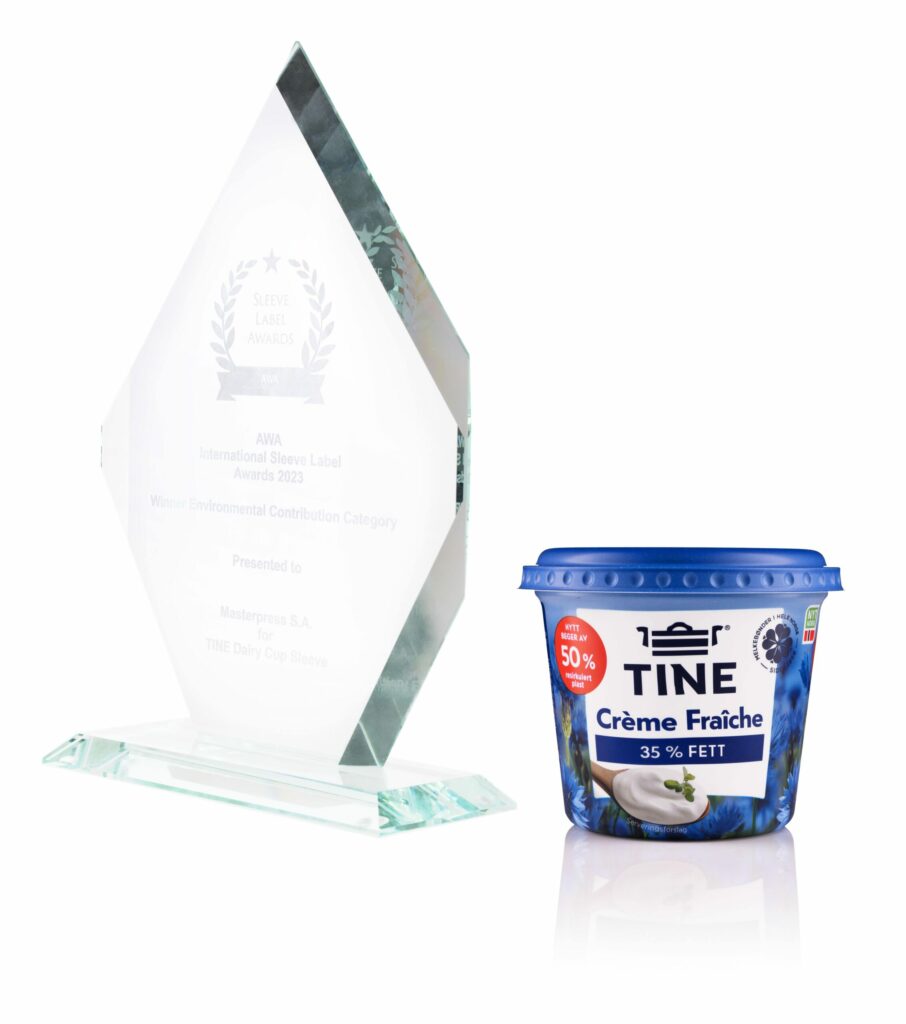
The role of collaboration and the responsibility of all involved parties
However, implementing new technologies alone is not enough to meet the ambitious 2030 goals. Coordination along the value chain is essential for successfully implementing technologies that align with the three Rs (Reduce, Reuse, Recycle) challenge set by the PPWD by 2030. This holistic approach demands an integration of environmental considerations, brand marketing strategies and consumer guidance focused on a more sustainable future. Designing products and packaging that not only appeal to conscientious consumers but also enhance brand value is crucial. Furthermore, these designs must be user-friendly, ensuring ease of use in terms of the three Rs. The ultimate goal is to meet consumer needs by offering products that are not only functional but also environmentally responsible, thereby fulfilling the PPWD’s objectives and contributing to a more sustainable future.
To meet the ambitious goals outlined by the PPWD will therefore require a re-evaluation of the typical “Extended Producer Responsibility” (EPR) doctrine. The EPR has traditionally placed the onus on producers to manage the environmental impacts of their products throughout their life cycle. However, to effectively address the challenges of the three Rs, a more inclusive approach is needed. This calls for the value chain, including regulators and consumers to equally share the responsibility and costs.
Such an approach recognizes that every participant in the product lifecycle – from packaging industries and labelling companies to transportation, retail, consumers, and recycling sectors – plays a vital role in the environmental footprint of products. Each and every link in the value chain should contribute to the solutions and innovations required.
Europe, while leading in regulatory changes like the PPWD, is not alone in this journey. Globally, various regions are implementing similar regulatory changes, emphasizing the importance of sustainable practices across the entire value chain. Europe, with its progressive policies, can set a precedent and lead the world in achieving a more sustainable and environmentally responsible industry standard. By citing global examples and learning from them, Europe can refine its strategies, encouraging a more collaborative and holistic approach to environmental responsibility.
Conclusions
Achieving the ambitious 2030 goals set by the PPWD hinges on the development of flexible solutions that can adapt to diverse regulatory, technological, and cultural needs, both now and in the future. A more nuanced strategy is required, one that considers the unique regulatory landscapes, ongoing technological developments, and cultural practices of different regions.
To successfully navigate these complexities, shared responsibility across the entire value chain is imperative. This means moving beyond the traditional EPR doctrine and fostering collaboration among all stakeholders, including manufacturers, retailers, consumers, and recycling sectors while simultaneously ensuring the engagement of regulators and consumers.
The path to meeting the PPWD’s 2030 objectives is multifaceted, requiring a harmonious blend of shared responsibility, collaborative effort, and relentless innovation. By embracing these principles and understanding that new innovations will continue to advance recycling, it is possible to create a sustainable future that accommodates a variety of needs and paves the way for global environmental stewardship.
